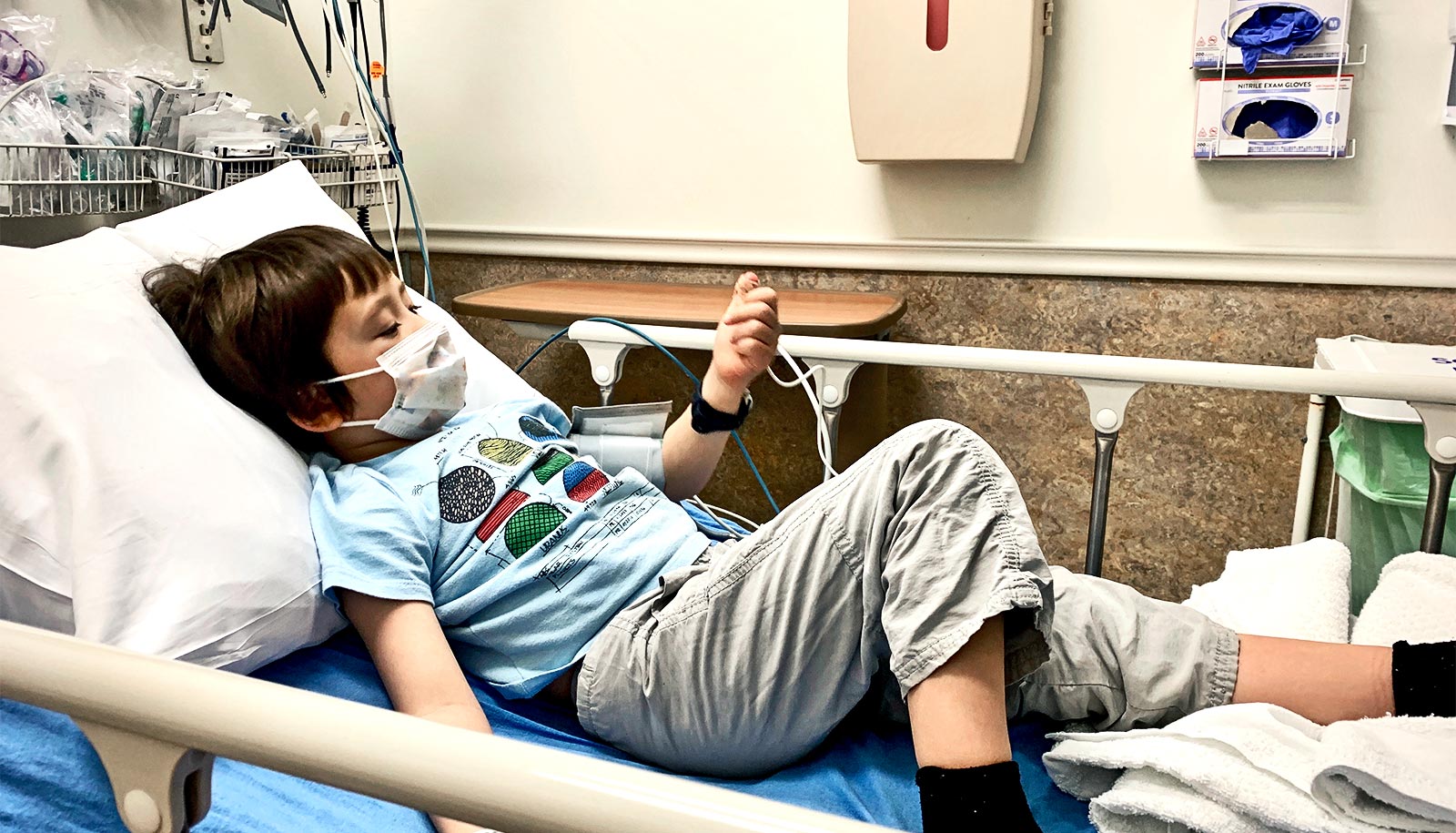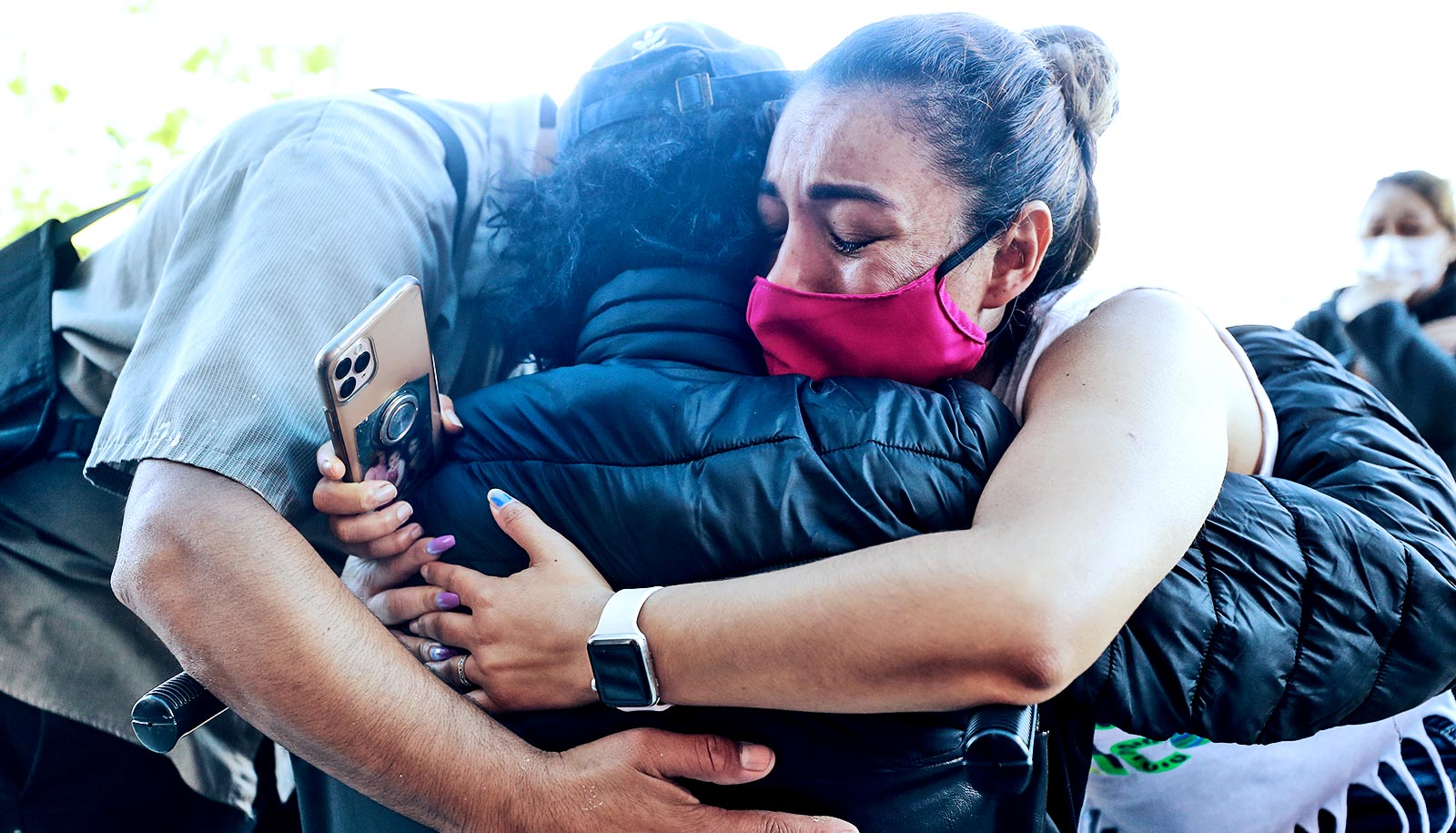Parents and guardians are “essential caregivers” and should be allowed at their child’s hospital bedside without restriction, especially if they live in the same house, experts argue in a new statement.
Since hospitals began curtailing visitation to prevent the spread of COVID-19, many allow only one parent at the bedside of pediatric patients.
The authors based their consensus statement on responses from parents interviewed for a study of neonatal intensive care at 36 hospitals throughout the country during early COVID.
Here, lead author Ashlee Vance, a research fellow at the University of Michigan School of Nursing, and Deena Kelly Costa, assistant professor of nursing, explain the consensus statement and essential caregivers:
What types of changes in parental visiting rights did you find in your research?
Vance: The majority of hospitals changed policies to limit visitation to one parent/caregiver at the bedside. Most hospitals allowed some parents to “switch” off, but often the restriction did not allow simultaneous presence. Several hospitals restricted all parents, caregivers, and others required that only one parent be designated as the “visitor” for the duration of the hospitalization. There were also a myriad of temporal restrictions: one parent per day, one parent per seven days, scheduled visits, limited to 1-2 hours, no overnights.
How does limiting visits/caregivers affect families and patients?
Vance: Limiting parent or family presence has unintended consequences. Parents reported feeling increasingly isolated, stressed, overwhelmed, and anxious without a support person. They were concerned that decision-making was not as effective and communication was unclear, as one parent must communicate information to the other.
If only one parent or caregiver can be present, the other misses opportunities to engage in care, which is especially important in cases requiring complex care or additional education prior to discharge.
Limiting presence can increase financial burdens if one parent must drive back and forth or find lodging while the other parent is at the hospital. The family is also split, when the goal of care is often to facilitate the parent-infant relationship to support rest, growth, and health.
The consensus statement focuses on neonatal intensive care, but you’ve said it’s relevant to all pediatric patients. What are its main points and how would you like to see it used?
Vance: Parents provide essential care and are allies in care with providers, and the statement advocates for families to be respected as essential members of the care team during hospitalization. Parental presence can be encouraged by prioritizing policies that affirm their presence and caregiving, by inviting their participation in the revision of policies, and by setting clear expectations for what presence means related to COVID-19.
I am hopeful that with this statement and the attention it may garner, that hospital administrators review visitation policies to ensure they aren’t overreaching. For instance, why limit visitation to one parent when they live in the same household? These policies had detrimental effects on families. I do believe that hospitals and providers can support families even in times of crisis and not create more distress than necessary.
During the height of Michigan’s COVID surge in April 2020, your infant son had frequent emergency room visits, and two surgeries. How was visitation handled?
Costa: As a mom, even with health care experience, having no additional support person in the ER and at office visits was incredibly stressful. Ultimately, I think this contributed to poorer quality of care–I wasn’t able to advocate or contribute as much to my son’s care because I was the only parent in the room, caring for our crying, sick baby and also trying to explain to the health care team what happened.
For his surgeries, because he was still an infant, both my husband and I were able to be there pre- and post-operatively, thankfully. The clinicians were wonderful and did the best they could under the circumstances, but communication was challenging at times. In normal circumstances, I think we may have been able to communicate more effectively, and possibly address his issue with one surgery and fewer doctor visits. While I recognize and support the need to take public health measures, preventing parents from being at the bedside of their child and supporting their partner during these events feels inhumane.
How can parents raise the topic of visitation with hospital staff?
Costa: Health care systems should not place parents in a position in which they need to address parental visitor restrictions with their child’s provider. First, this places undue pressure on parents and creates a possible adversarial relationship between parents and providers. Second, it places parents in the position of asking providers for special treatment, which also feels uncomfortable. The consensus statement from Dr. Vance and team is the perfect solution; it may encourage hospitals to create system-level change so that policies are supportive of parental or caregiver presence at the bedside without restriction, thereby eliminating the parents as the go-between.
Vance: I agree it’s best if parents do not have to address this topic with providers. But, if a parent believes a policy is too restrictive, I would advise a nondefensive conversation with a provider about the policy and if there are any allowable exceptions. I think they could communicate concerns and relay how it is impacting their family. If their concerns are not addressed satisfactorily, I would encourage them to speak with the unit leadership and/or hospital administration. There is likely an exception process in place and they can determine if they meet the criteria.
Is the term “essential care” new with COVID?
Vance: The term “essential care” came directly from parents who stated this is how they wanted to be viewed. The specific phrasing of “essential care” is new in this context, but for a long time, there have been many advocates for family-centered care which integrates family involvement.
Vance and Costa are both members of the Institute for Healthcare Policy and Innovation. Tiffany Moore of the University of Nebraska Medical Center cowrote the consensus statement.
Source: University of Michigan


